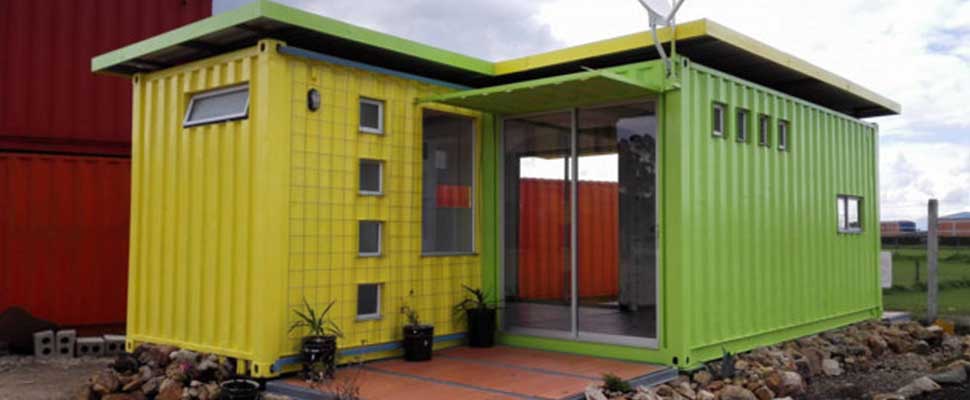Why should you consider living in containers?
Less building time and lower construction costs are some of the advantages of this form of alternative architecture, as well as benefits for the environment

It is possible to live in containers. Those metal boxes that are used to transport merchandise across the oceans have a large number of uses in addition to the purpose for which they are manufactured. The attraction of this is not living in a box with history or that has traveled more than one, but the characteristics of the containers are ideal for the construction of buildings for several reasons. We spoke with Álvaro Rodríguez, an engineer from the company Arqcon, who told us about this trend in modern architecture that has been gaining popularity in Colombia recently.
Leer en español: ¿Por qué debería considerar vivir en contenedores?
What kind of constructions are you doing with containers?
We have made offices, houses, warehouses, laboratories for companies of different industries, foodtrucks and sales rooms. Some of our clients are Casa Luker, Tito Pabón, and the Acueducto de Bogotá. Now we have a project to build 23 houses of 200 m2 near Cajicá, which will be powered by solar energy.
What are the advantages of this system?
The speed and versatility in the design of the construction. It is 75% faster than traditional or prefabricated systems. The costs are between 20% and 30% cheaper than those of traditional construction. It has benefits in terms of environmental impact because materials are being recycled instead of being discarded. And they are completely anti-seismic, unlike traditional constructions that tend to fracture. The structure is quite resistant since the containers are made with corten steel, a type of steel resistant to corrosion, so they are designed to travel in the sea.

If someone wants a house made with containers, they need a lot of land and …
Nothing else. They only need the lot. After agreeing on the design, Arqcon builds the house, takes it, and installs it. The electrical, hydraulic, sanitary installation is made; all utilities are enabled as in any house. The finishes depend on what the customer needs and their budget. You can use any type of floor, ceramic, tablet, laminate flooring… just like a house. [Inside], the walls have drywall and a thermal insulation, and the structure of the windows is made of aluminum, as in any construction. The roof has a roof with a sloping metal structure and thermoacoustic tile, which serves to isolate and dampen the sound of rain.
Do they use new containers or are they simply reused?
Sometimes you can buy new containers for construction. However, containers that have arrived in the country transporting merchandise are usually used. Colombia is a country that imports more than it exports, so more containers arrive than those that leave. For companies it can be more expensive to take them back than to leave them here and recycling them is ideal in ecological terms.
Is there any special regulation for this type of construction?
In Colombia, there are still no special rules. Other countries in the world have been using container architecture for years, but here it is relatively recent. In Holland, for example, there is the largest complex in the world, a student residence with 1000 units that was built more than ten years ago. The best thing to do is find out in the municipality to know if they have any measure in this regard, but there is no national regulation for container construction [in Colombia].
How have you fared in the housing market?
It has been difficult to change the mentality of the people. Many people see the designs or the houses that we have already made, they get excited and say they want one, but in the end they do not decide. It is difficult to get out of the mold, to change that idea that the construction is only with brick and cement.
Latin American Post | Paula Bautista
Copy edited by Laura Rocha Rueda





